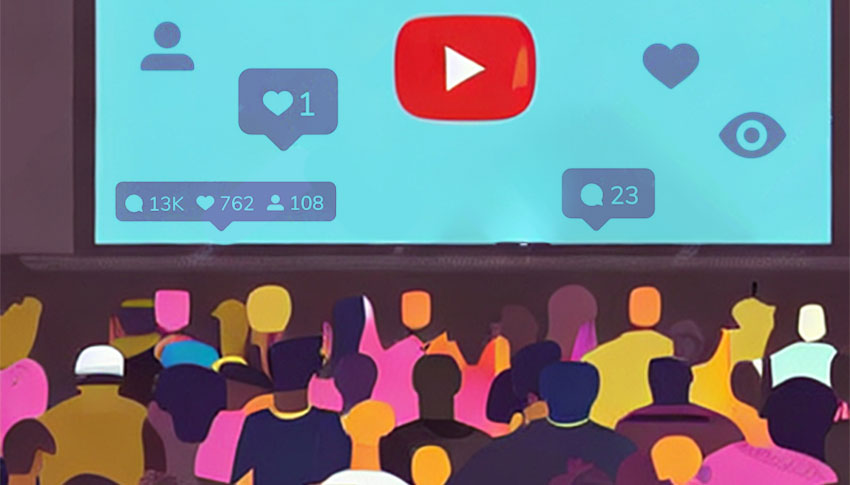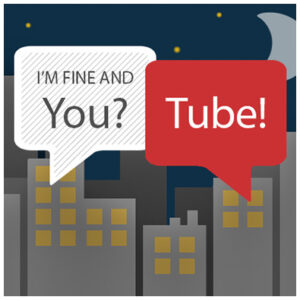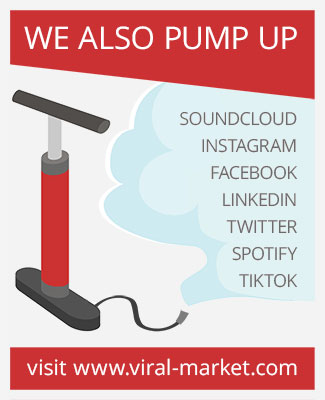In the digital sphere, particularly on social media platforms like YouTube, the power of numbers is undeniable. The quantity of views and likes a video accumulates can greatly sway the audience’s perception and interaction with the content. This concept, known as “social proof” is a potent psychological principle that shapes our online experiences. This article explores the significance of social proof on YouTube and its implications for viewers and content creators alike.

Social Proof: The Power of the Crowd
Social proof is a psychological theory that posits that individuals are more likely to perform an action if they observe others doing the same. Applied to YouTube, this suggests that videos with a high count of views and likes are perceived as more engaging or valuable, thus attracting more viewers. This effect can create a virtuous cycle, where popular videos gain even more popularity due to the social proof they generate.
The Influence of Metrics on YouTube In the digital realm, particularly on platforms like YouTube, views and likes serve as barometers of a video’s popularity and quality. A high view count signals that the video is worth the time, while a large number of likes indicates that the content is enjoyable or valuable. These metrics can significantly sway a user’s decision to watch a video or subscribe to a channel.
Social proof on YouTube can take several forms
Views: The view count of a video can act as a form of social proof. If a video has been viewed millions of times, new viewers might perceive it as popular or valuable, and therefore decide to watch it.
Likes: These are direct indicators of the audience’s reaction to the content. A high number of likes suggests that the video is well-received, which can encourage new viewers to watch it.
Comments: A high comment count not only indicates engagement but also provides social proof. Positive comments can encourage new viewers to watch the video, while negative comments might deter them.
Shares: If a video is frequently shared, it can act as social proof that the content is worth watching.
Subscribers: The number of subscribers to a YouTube channel can also serve as social proof. A high subscriber count often indicates that the channel consistently produces content that people find valuable.
In essence, social proof capitalizes on the human tendency to follow the crowd. In an online context, it can significantly impact user behavior, influencing what content they decide to consume, share, and engage with.
For YouTube creators, achieving high numbers of views and likes is vital. These metrics not only enhance their videos’ visibility but also boost their credibility and attract more subscribers. As a result, many YouTube creators strive to increase these numbers, often employing various strategies to enhance their social proof.
Social proof is incredibly important for YouTube creators for several reasons
Visibility: YouTube’s algorithm favors videos with high engagement (views, likes, comments, shares). The more engagement a video has, the more likely it is to be recommended to other users on their home page or in the “Up Next” section. This increased visibility can lead to a larger audience and more views.
Credibility: High engagement numbers can enhance a YouTube creator’s credibility. When new viewers see that a video or channel has a large number of views or likes, they may perceive it as more trustworthy or authoritative. This can make them more likely to watch the video, subscribe to the channel, or engage with the content through likes or comments.
Monetization: For YouTube creators who monetize their channel through ads, sponsorships, or merchandise sales, high engagement numbers can lead to increased revenue. Advertisers are more likely to sponsor channels with a large, engaged audience, and viewers are more likely to purchase merchandise or support the channel through donations or memberships if they see others doing the same.
Community Building: High engagement can also help YouTube creators build a community around their channel. When viewers see a lot of likes, comments, or shares, they may be more likely to join the conversation or share the video with their own networks. This can lead to a more engaged and loyal audience, which can provide valuable feedback, support the YouTube creator’s other projects, and help attract new viewers through word-of-mouth.
To enhance their social proof, YouTube creators might employ strategies such as asking viewers to like and share their videos, responding to comments to boost engagement, collaborating with other YouTube creators to reach a larger audience, or creating high-quality, engaging content that viewers will want to share with others.
In conclusion, the principle of social proof plays a significant role in user behavior on YouTube. The number of views and likes a video receives can greatly influence its perceived value and popularity, impacting both viewers and content creators. As a result, services that sell views and likes have found a lucrative market, despite the potential ethical considerations. As the digital landscape continues to evolve, understanding these psychological principles and their implications is crucial for navigating the world of social media.
Links and References
- Views’ are lies – Analyzes how platforms like YouTube inflate view counts, questioning their reliability as indicators of genuine engagement. Published: 2 months ago.
- Would the Internet Be Healthier Without ‘Like’ Counts? – Discusses the impact of visible engagement metrics on online behavior and the move towards hiding them to promote healthier interactions. Published: 5.8 years ago.
- YouTube Expands Shorts Toolkit: Auto Layout, Text-to-Speech, & More – Details YouTube’s expansion of its Shorts toolkit, including features like auto layout and text-to-speech, enhancing content creation. Published: 2024.
- YouTube Live Streaming Best Practices: Vertical & Horizontal – Offers insights into optimizing live streams on YouTube, comparing vertical and horizontal formats. Published: 2024.
- Targeting Competitor YT Channels: r/PPC – A Reddit discussion thread where PPC professionals share experiences and advice on targeting competitor YouTube channels. Published: 2024.
Related posts:
How to unfreeze your YouTube channel
The impact of YouTube's new algorithm on video creators and how to adapt (December 2022)
Clarity, Cognitive Load, and First-Second Battle in Modern Videos
Underperforming videos can hurt your Youtube channel?
Youtube will remove the Dislikes below the videos - do you know why?
Consultant in communication and marketing, I support professionals and businesses in enhancing their online presence through tailored strategies.
With extensive experience in digital marketing, I focus on designing targeted social media campaigns and managing video promotion projects.
I conduct ongoing research on social networks, especially YouTube, analyzing its algorithms, user behavior, and content dynamics to inform effective practices.





















